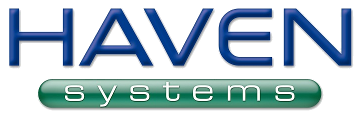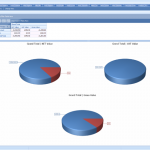Complete epos systems facilitate the end-to-end transaction, but it’s the back office and management information system that handles the point of sale data collection. The back-office system allows authorised users to control for example, products, prices, and staff access at the highest level. Drilling down, a super user or senior manager may edit individual users or staff members authority level limiting their access to, for example, specific functionality within the system or to view specified outlets or sites.
But it’s the reporting suite that really delivers as a smart epos solution.
What is a POS report?
The high-level data means that all aspects of sales by user, sales by time including day by day, hour by hour or down to the second is available within a specific point of sale report. Analysing each and every trading session helps to identify patterns in a way that inventory management might be improved, for example, a product or range that sells out every day by say 09:30am could be a missed sales opportunity. Identifying a product that sells out early each day could be a result of under production or under ordering. Spotting trends in footfall will help you to fine tune staffing levels more accurately and analysing the response to promotions will help you to increase overall spend per head (SPH).
How does POS reporting work?
The reporting works by collecting point of sale data at the till. As your epos software handles every sales transaction from start to finish, it is also capturing critical data about your business and overall sales performance. However, any epos sales report will provide much more than just end of day sales values. It is important that users can drill through the reports to assist in decision making and taking appropriate action based on the results.
The top 5 reports you will need:
There are many reporting options available etc, but these are essential for the smooth running of your restaurant etc
Sales Reports
There should be multiple ways to view all or selected transactions and be either as gross or net of VAT.
Payment Reports
Analysis of the type of payment, either card, cash or online and the breakdown of any change given should be included in various types of payment reports.
Employee Reports
The ability to review total sales and individual transaction by each user is key in terms of both audit, overall performance and identifying training requirements.
Inventory Reports
Analysis of stock sold and stock in hand by location.
Customer Reports
The system should have scope for customer reports to be generated.
Other report categories include but not limited to a wide range of user defined reports within the Report Group Header as follows;
- Financial Reports
- Site Analysis Reports
- Exception Reports
- Comparison Reports
- Account Analysis
- Payment Reports
- Transaction Reports
- Sales Reports
- Lists
- Live Reporting
- Labour v Sales
- Customer Lists
- End of Day Reports
- Income Comparison Reports
- Cashless Transaction Reports & Cashless Balance Reports
- Team Leader Reports
- Management Reporting
- Reports for Sales, Stock, Margins and consumption will be found from within the circa +75 different pre-defined reports.
- Custom reports can be created using multiple data sets to deliver results by the operator, by EPOS terminal, by payment method etc.
In summary, epos reports should provide improved business analysis.
The back-office suite should be accessible by as many authorised users as is required. User access control means that only authorised users can see relevant data, so that local management on a site by side basis is controlled. Access is configured according to the different user levels such as manager, administrator, sales assistant. Separately, a head office or central management team can view the entire estate.
Within the comprehensive reporting suite, Analytics, a tool whereby authorised users are able to create their own report using drag and drop filters adds additional powerful functionality. The reports are displayed both numerically and include graphics. Once a report is created, it may be saved, named and then re-opened and refreshed to display the latest data. Using Analytics will be pivotal in achieving the key objective in terms of improved business analysis and forecasting. As well as Analytics, the reporting suite includes a comprehensive set of reports covering all aspects of business as detailed in the relevant sections. Standard reports may be exported in multiple formats including but not limited to MS Excel, CSV and PDF. A great deal of functionality is included so that management resource is maximised, for example, standard reports may be scheduled for automated delivery to specified users email inbox.
The system should include a comprehensive reporting suite within the Back-Office system. User access control means that authorized administrators have access to their own information only weather that be a single department, multiple or all departments. Reports are generated using from/to date range and selecting filters to tailor reports. Once created, reports may be exported in various formats including Excel, CSV, PDF, RTF, Text, Image.
The system should support the running of scheduled reports that are automatically emailed to a specified user’s inbox.
Must read: Think you might not know about EPOS systems


